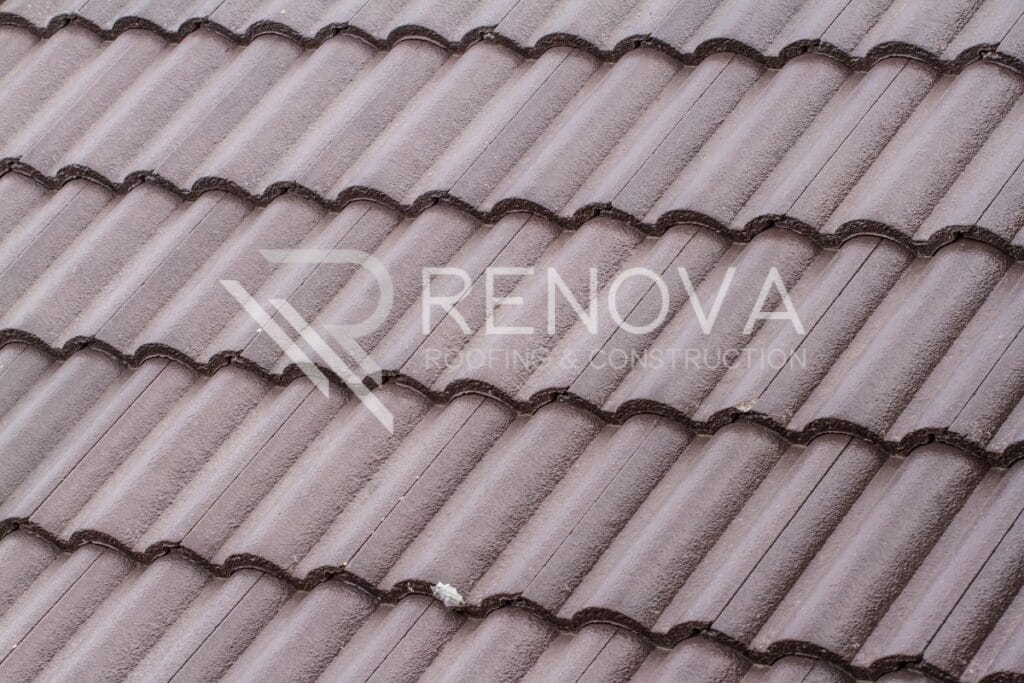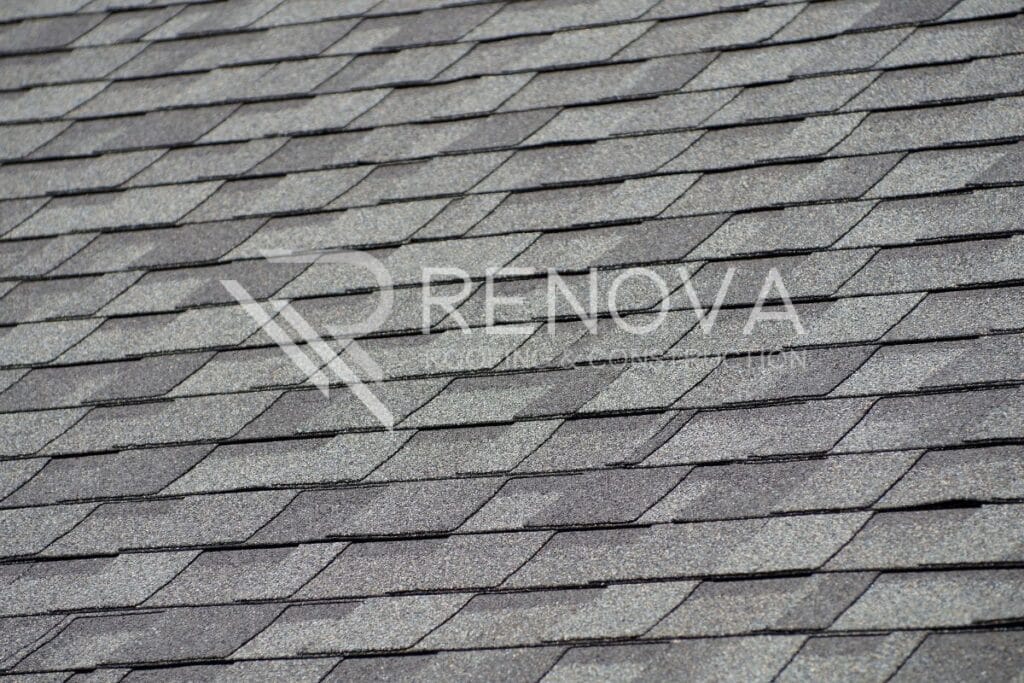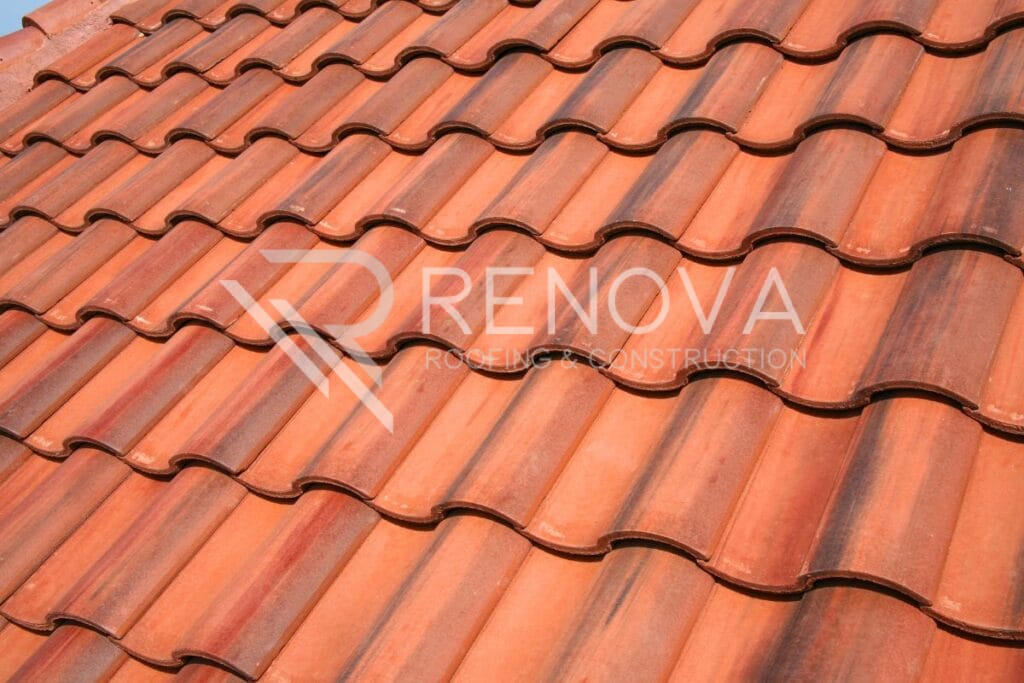Being a top choice for durability, affordability, and aesthetic appeal, concrete roof tiles have gained significant popularity in the roofing industry. If you’re building a new home or planning a roof replacement, understanding these tiles can be very beneficial.
This comprehensive blog post will provide all the essential information about concrete roof tiles so you can make an informed decision for your roofing project.
What Are Concrete Roof Tiles?

Made from a mixture of cement, sand, and water and molded under pressure and heat, concrete roof tiles are an affordable and long-lasting roofing material. They have a lifespan of more than 50 years and can withstand strong winds and prolonged rain.
Concrete tiles, as opposed to clay tiles, come in a range of colors and can be made to resemble wood and slate. Mechanical fasteners are usually used during installation rather than mortar to ensure a firmer hold. Even though concrete tiles require less upkeep than other roofing options, moss growth may need to be professionally addressed to avoid damaging the tiles.
What Are The Pros And Cons Of Getting A Concrete Tile Roof?
| PROS | CONS |
| Durable: With a lifespan of 50 to 70 years, concrete tiles are built to last, handling extreme weather like high winds and hail. | Heavy: These tiles are much heavier than other options, often needing extra roof support, which can add to installation costs. |
| Low Maintenance: They resist rot and insects, requiring little upkeep aside from regular cleaning to keep them looking good. | Higher Initial Cost: Though they offer long-term savings, the upfront cost is higher than other roofing options. |
| Energy Efficient: Concrete tiles reflect heat, keeping homes cooler in warm climates and helping reduce energy costs. | Prone to Cracking: Despite their durability, concrete tiles can crack if walked on or hit hard, so maintenance must be handled carefully. |
| Versatile Design: Available in various styles and colors, they can mimic materials like slate or clay, offering great design flexibility. | Challenging Installation: Installing concrete tiles can be complex, especially on roofs with steep slopes or intricate designs. |
| Fire Resistant: Rated Class A for fire resistance, concrete tiles provide excellent protection in case of fire. | Moss Buildup: In damp areas, moss and debris can collect on the tiles, requiring occasional cleaning to avoid damage. |
Types of Concrete Roof Tiles
1. Flat Tiles
Featuring a simple, flat design, flat tiles offer a sleek, modern look. Often used in contemporary buildings, they come in various patterns and are known for their durability and low maintenance.
2. Barrel Tiles
With their curved, semi-cylindrical shape, barrel tiles create a distinctive rounded appearance. Popular in Mediterranean and Spanish-style homes, they are effective at shedding water and debris.
3. Interlocking Tiles
Interlocking tiles fit together seamlessly, enhancing weather resistance. Their interlocking design helps prevent leaks, and they are available in various profiles and colors, allowing for customization.
4. French Tiles
Similar to barrel tiles but flatter and wider, French tiles are often used in traditional European architecture. They overlap to create a strong barrier against the elements and allow for good ventilation.
5. Spanish Tiles
Known for their vibrant colors and curved shapes, Spanish tiles are commonly used on Spanish and Mediterranean-style homes. They offer both aesthetic appeal and durability, handling harsh weather conditions well.
Considerations When Choosing Concrete Roof Tiles
When selecting concrete roof tiles, there are important factors to consider to ensure you make the best choice for your home.
1. Weight and Structural Support
Concrete tiles are much heavier than other roofing materials, so your home’s structure needs to support the extra load. It’s essential to consult with a roofing professional to determine if additional reinforcement is needed to avoid future issues.
2. Installation Requirements
Installing concrete tiles is complex and requires a professional. Proper moisture barriers and ventilation must be in place to protect the roof and your home.
3. Maintenance Needs
While concrete tiles are low-maintenance, regular cleaning and inspections are still necessary. Moss, algae, or debris can build up over time, leading to damage if not addressed. Routine checks, especially after severe weather, help keep the roof in good shape.
4. Climate Considerations
The local climate plays a big role in how concrete tiles perform. In hot areas, heat-reflective coatings can reduce energy costs, while in cold climates, it’s essential to choose tiles that can withstand freezing and thawing cycles to prevent cracking.
5. Local Building Codes and Regulations
Before installing concrete roof tiles, make sure you follow local building codes and regulations. This includes obtaining the necessary permits and ensuring your roof meets safety standards to avoid fines and guarantee long-term performance.
Concrete Roof Tiles vs. Other Roofing Materials
1. Asphalt Shingles

The most common roofing material in the U.S. is asphalt shingles. They are affordable, versatile, and easy to install, with a lifespan of 20 to 30 years. They come in many colors and styles, performing well in various weather conditions. However, they may need more frequent replacement and are less energy-efficient compared to concrete tile or metal roofs.
2. Clay Roof Tiles

Clay tiles are made from baked clay and are known for their durability and natural look. They are lighter than concrete tiles, making them easier to install and needing less support. They resist water well and maintain their color but may crack in very cold temperatures.
3. Metal Roofs
Metal roofs are lightweight and energy-efficient, lasting 40 to 70 years. They reflect solar heat to lower cooling costs but can be noisy during rain and may need extra insulation. They come in various colors but have fewer design options and can dent or scratch.
4. Wood Shakes
Wood shakes offer a rustic look and are usually made from cedar, redwood, or pine. They last up to 30 years but need regular maintenance to prevent rot and insect damage. Less fire-resistant, they may not be suitable for all areas.
Cost of Concrete Roof Tiles in 2024
Here’s a breakdown of the costs you can expect when installing concrete roof tiles:
Installation Costs
For installing concrete roof tiles, expect to pay between $7 and $19 per square foot. For a roof size between 1,500 and 2,500 square feet, the total cost ranges from $10,500 to $47,500. On average, homeowners spend about $24,500 for a concrete tile roof replacement.
| Roof Size (Square Feet) | Total Cost (Installed) |
| 1,000 | $7,000 – $19,000 |
| 1,500 | $10,500 – $28,500 |
| 2,000 | $14,000 – $38,000 |
Material Costs
Concrete tiles themselves cost between $3 and $5 per square foot. Prices can vary based on brand, quality, and style.
Average Cost Breakdown
- Material Costs: About 60% of the total cost
- Labor Costs: About 40% of the total cost
Restoration and Repair of Concrete Roof Tiles
Maintaining concrete roof tiles may involve deciding between restoration and replacement. Here’s how to choose the best option:
- Restoration: This means fixing and updating the current tiles to make them last longer. It’s a good option if the tiles are in decent shape but need some work.
- Replacement: This involves removing the old tiles and installing new ones. It’s needed if the tiles are heavily damaged or worn out.
How Long Do Concrete Roof Tiles Last?
Concrete roof tiles are built for durability, often lasting up to 50 years or more with proper upkeep. However, environmental factors like UV exposure and severe weather can shorten their lifespan, causing fading and wear. Regular cleaning and inspections can help maintain their longevity and appearance.
Are Clay Roof Tiles Better Than Concrete?
When comparing clay and concrete roof tiles, clay tiles are usually superior due to their natural resistance to fading, moisture, and pests. They are lighter and offer better insulation. Concrete tiles, while generally more affordable, provide similar durability. The choice between the two depends on your budget and specific roofing needs.
Can Concrete Roof Tiles Be Painted?
Concrete roof tiles can be painted to update their look or protect against environmental damage. Ensure proper preparation by cleaning the tiles, repairing any damage, and applying a suitable primer before using high-quality paint. This can improve the roof’s appearance and potentially increase property value.
How Are Concrete Roof Tiles Attached?
Concrete roof tiles are typically secured with nails and adhesive. Nails attach the tiles to the roof deck, while adhesive enhances stability and prevents movement during strong winds. This combination ensures the tiles stay in place and effectively protect against the elements.
Conclusion
Concrete roof tiles are a durable, budget-friendly, and stylish choice for homeowners. By understanding their benefits, potential issues, and key considerations, you can decide if concrete tiles are the best fit for your home. With proper installation and maintenance, concrete roof tiles can offer long-lasting value and protection for your property.
To get top-quality tile roofing services, including expert installation of concrete tile roofs, choose Renova Roofing & Construction. Our skilled team ensures your roof looks great and lasts long. Trust us for durable and stylish roofing solutions. Call us today at (601) 647-3433.

